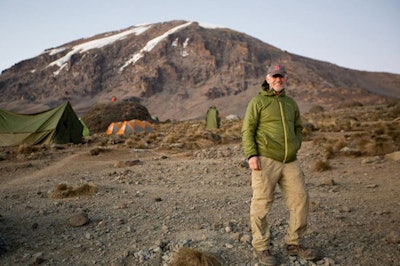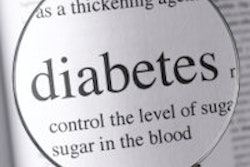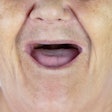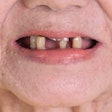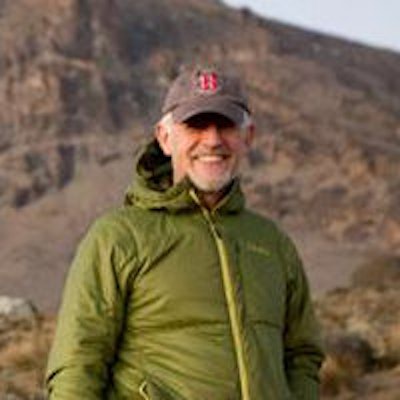
Getting up at midnight and climbing nearly eight hours in the dark to Mount Kilimanjaro's 19,341-foot summit was physically challenging, but not the hardest part of the trip, recalled Kentucky dentist David Shorten, DMD.
Eight days of hiking -- including a grueling 17-hour day -- required more mental stamina than physical endurance, said Dr. Shorten, a Louisville general dentist who recently scaled Africa's highest peak to raise awareness and money for diabetes on behalf of his wife, who has diabetes.
"When you have day after day of pushing yourself to the limit, mentally you have to be able to say, 'OK, just think about the next few minutes or next hour,' " Dr. Shorten told DrBicuspid.com of his rigorous adventure. "Seeing the top of that mountain way off in the distance, you think, 'How am I gonna get up there?' And you'll start to break down physically if you let your mental status break down. So I think the hardest part is keeping your focus mentally and not thinking too much about the big task ahead of you. Just take the next step forward."
But, as difficult as the trek was, Dr. Shorten asserts that it's easier than what his wife, Carol Kulp-Shorten, MD, a Louisville dermatologist who has type 1 diabetes, goes through every day. She was diagnosed about 12 years ago, at age 43.
"I had to overcome hurdles on a daily basis to make it to the summit, but people with diabetes struggle on a daily basis that lasts a lifetime," he explained. "She has to overcome the daily hurdles of high and low blood sugars, and I just wanted to raise awareness that people with diabetes deal with that every day."
Formerly known as juvenile-onset diabetes, type 1 is an autoimmune disease in which the body no longer makes insulin. People often are more familiar with type 2 diabetes, a metabolic disorder frequently discussed in association with the obesity crisis in the U.S.
Type 1, a less common form, is not preventable and can have a major impact on the lives of people who have it. For example, Dr. Kulp-Shorten has to stick herself six to eight times a day to check her blood sugar and had wild fluctuations in her blood sugar before getting an insulin pump.
Dr. Shorten's odyssey began when his friend, Mike Van Hamburg, came in for a prophy last summer and invited him to come along on a planned climb to Kilimanjaro. "I said, 'That's interesting. Let me think about it.' " A few days later, Dr. Shorten agreed to join him.
But he had to reschedule a medical/dental mission trip to Nicaragua that he usually does at this time of year.
The climbing trip was originally intended as just an adventure, but his wife's condition inspired him to make it more meaningful.
"I decided to make it an awareness [campaign] and fundraiser because my wife has type 1 diabetes," he explained. "I thought this was different enough that people might be a little more interested in hearing about what I did and about diabetes at the same time."
Preparation
Dr. Shorten, an avid skier, mountain biker, and hiker who's climbed several 14,000-foot mountains in Colorado, called climbing Kilimanjaro his most formidable endeavor yet.
"It was very difficult," he said. "Physically, it was the hardest thing I've ever done because of the number of hours it took to do it."
To prepare, he did considerable research, including watching videos, reading blogs, and daily workouts on a treadmill.
The trip, which Dr. Shorten paid for himself, included enduring conditions ranging from jungles to bitter cold.
The group included 12 climbers, four guides, and 10 porters. Dr. Shorten's 20-lb backpack had water, energy bars, and clothes, but he noted the porters carried backpacks that weighed up to 80 lb, in addition to duffle bags perched on their heads and handfuls of equipment.
Weather, route
On January 27, the group started out in 85° weather in the rainy mists of Tanzania's Serengeti National Park forests and jungles, where Dr. Shorten heard monkeys but didn't see them. But it quickly got cold as the group reached 10,000 feet.
"There was no bathing, so we all stunk together," Dr. Shorten laughed.
The group took the Lemosho route, a newer, longer trail which allows climbers to acclimate themselves better to the altitude. They camped between 13,000 to 15,000 feet to adjust to the higher elevations.
"It's a long, hard hike; you have to scramble over rocks and boulders," Dr. Shorten explained, but no special climbing equipment was needed.
One of the hairier parts was going up the Barranco Wall. "There was a little ledge cut into it where you traverse up the wall. That would be a spot where you might rope in but we didn't," Dr. Shorten said. "That part was fun but challenging."
Fortunately, he didn't experience one of the most dangerous aspects of high climbing -- severe altitude sickness. But Dr. Shorten noted climbers can succumb to fluid buildup in the lungs or brain, pulmonary or cerebral edema, which can be deadly.
"I just had a little headache," he recalled.
Since Dr. Kulp-Shorten also has peripheral arterial disease in her legs, she can't go climbing or mountain biking with her husband anymore.
But she did help spur him on by sending him off with inspiring messages to open during his climb.
"One of the things she did that really encouraged me on a daily basis was she had given me cards in envelopes labeled for each day for me to read," Dr. Shorten said. "Each one had an encouragement like, 'You can do this!' 'I know you're going to make it,' or 'Just keep going forward.' "
Dr. Shorten also carried a T-shirt from the American Diabetic Association, imprinted with "Stop Diabetes" in big letters that he displayed when he reached the top.
The coldest episodes came when the group climbed through the night.
"We were climbing about 3 a.m. at 18,000 feet, and the water in my CamelBak froze," Dr. Shorten recalled. "I had to huff and puff through the tube with air I didn't really have to clear the tube."
At that point, the group would hike for 25 minutes and rest five minutes. "But you're kind of getting hypoxic and not thinking clearly," he said. "It was so cold my water kept freezing, making it hard to drink so I just kind of quit drinking water. It kind of caught up with me on the way down."
Reaching the summit
On the sixth day, February 2, the group was awakened at 11 p.m. and left for the summit at midnight. Climbers usually make the final assault at night to ensure having enough time to get back down the mountain before dark the next day.
After climbing nearly eight hours in the dark, the group reached the 19,341-foot peak just as the sun rose.
"What's really cool is we were climbing up and it's dark, and at one point you're just waiting for the sun to come up," Dr. Shorten recalled. "It comes up at 6 a.m., and we weren't quite to the summit yet, but we had perfect view of the sun coming up over another distant mountain. That was a spectacular view. It was awesome."
But after hiking 11 and half hours to get to the summit and return to the base camp at 15,000 feet, the group only had a two-hour break for lunch before they had to hike another four hours down the mountain to the next camp.
"Space on the mountain is limited; climbers are coming and going at the same time, and there's only a small base camp at 15,000 feet," Dr. Shorten explained. "We had to clear our stuff out to make room for new climbers. So we went from the peak at 19,000 feet to the camp at 10,000 feet in one day. We started midnight and finished 5 p.m. the next day."
The exhausting climb took all he had. "If that tent was just 10 feet farther away, I would have had to just stop and lie on the ground," Dr. Shorten laughed.
On February 4, his mammoth climb was over. "It was a once-in-a-lifetime trip, that's for sure," he said.
So far, Dr. Shorten has raised $16,000 for diabetes research.
"When I got back, I was pretty tired and slept like a baby," Dr. Shorten said. "My muscles were sore, but within 48 hours I was kind of back to normal."
Of her husband's Herculean achievement on her behalf, Dr. Kulp-Shorten said, "I don't know too many men that would climb a mountain for a woman, and I feel very blessed and fortunate that I happened to be married to one of those men."
